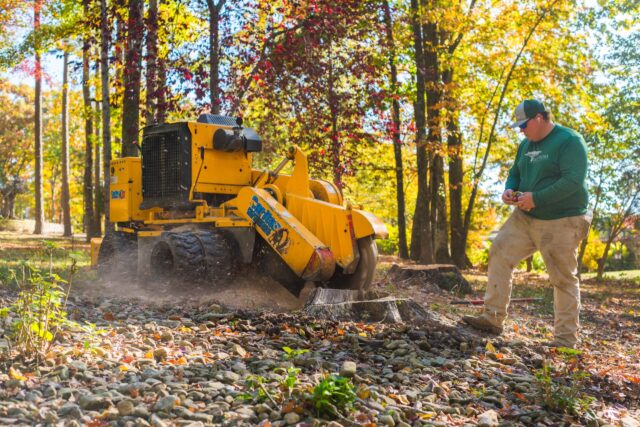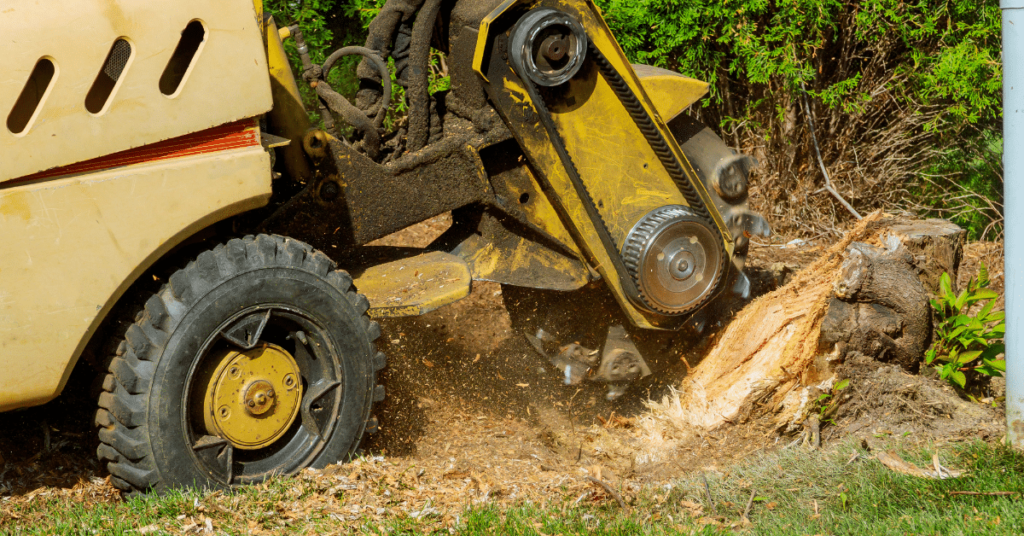Removing tree roots can be a necessary task for a variety of reasons, from clearing space for construction to preventing damage to pathways. However, it’s crucial to approach this with care to avoid harming the tree or surrounding plants. In this article, we’ll delve into the significance of careful tree root removal, the essential tools needed, and techniques to minimize damage. We’ll also discuss post-removal care and when it’s best to seek professional assistance.
Understanding the importance of careful tree root removal
Tree roots play a fundamental role in the health and stability of any tree. They not only anchor the tree into the ground but also absorb water and nutrients essential for its growth. While it may be tempting to tree root removal casually, understanding their vital functions can help prevent harm.
The role of tree roots in a tree’s health
Roots are the unseen heroes of the tree world. They extend deep into the soil, forming a vast network that helps the tree withstand wind and storms. They act as a reservoir for nutrients and water, ensuring the tree remains healthy. When roots are damaged or removed incorrectly, the tree can suffer from stress, which might not show up immediately but can have long-term consequences.
Moreover, the root system is intricately linked to the tree’s overall ecosystem. Many trees have mycorrhizal fungi associated with their roots, which form symbiotic relationships that enhance nutrient uptake. This partnership allows trees to access phosphorus and other essential minerals that are otherwise unavailable. The health of the tree is, therefore, not just a matter of its roots but also the surrounding soil environment, which can be disrupted by careless removal practices.
Potential risks of improper tree root removal
Improper root removal can lead to various issues, such as soil erosion, instability, and even tree death. The most significant risk is damaging the tree’s ability to absorb essential nutrients and water, resulting in wilting or disease. Additionally, if the roots are intertwined with other plants or structures, their removal can cause damage to surrounding ecosystems or property.
Furthermore, the consequences of hasty root removal extend beyond the immediate area. For instance, the loss of a tree’s roots can lead to increased runoff during heavy rains, exacerbating flooding in nearby areas. The destabilisation of the soil can also create hazardous conditions, particularly in urban settings where trees are often planted close to buildings and infrastructure. This interconnectedness highlights the need for a thoughtful approach to tree root management, ensuring that both the tree and its environment are preserved for future generations.
Essential tools for safe tree root removal
Equipping yourself with the right tools can make a world of difference when it comes to root removal. The tasks may involve digging, cutting, or lifting, and using the appropriate tools can save you time and effort while protecting nearby plants.
Hand tools for precision work
Hand tools such as spades, pruning shears, and axes are essential for precision in smaller-scale root removal. A sharp spade will help you slice through soil effectively, while pruning shears allow for clean cuts on smaller roots. An axe can come in handy for larger root structures but requires careful handling to avoid damaging the tree further.

Power tools for larger root systems
For extensive root systems, power tools might be necessary. A chainsaw can be quite effective, but it’s crucial to know exactly where to cut. Additionally, a stump grinder can help remove stubborn roots left in the ground after a tree has been cut down. Always read the manual and ensure you’re wearing protective gear when handling power tools.
Techniques for minimising damage during tree root removal
Knowing the right techniques to employ during root removal can greatly reduce the risk of damaging the tree itself. Careful methods are essential for maintaining the tree’s overall health.
The trench and dig method
The trench and dig method involves carefully digging a trench around the root area. This allows you to inspect the roots before cutting and helps minimise damage to the tree. Start by marking out the trench and digging down at least 30 centimeters to ensure you’re getting below the major roots. Take your time and work carefully to avoid severing any essential roots.
The root cutting method
When it comes to larger roots that must be removed, the root cutting method may be the best approach. This involves using your hand tools to cut through the roots cleanly, making sure to prune any smaller roots first. By cutting roots cleanly rather than tearing or wrenching them, you will help reduce shock to the tree.
Tips for post-removal tree care
Once the roots have been removed, the job isn’t over. Proper post-removal care is crucial for ensuring the tree’s continued health and resilience. There are several key practices to keep in mind.
Ensuring proper hydration for the tree
After the stress of root removal, trees may require extra hydration. Make sure to water the tree thoroughly, particularly in the weeks following the root removal. This helps to support recovery and promotes healthy regrowth. Mulching around the base can also help retain moisture.
Monitoring tree health after root removal
Keep an eye on the tree for signs of distress after root removal. This includes yellowing leaves, wilting, or unusual spots on the bark. If any of these signs appear, it may be necessary to provide additional care or consider seeking advice from a professional arborist.

When to call in the professionals
While DIY root removal can be feasible in many cases, there are scenarios where enlisting professional help is the best route. Knowing when to ask for assistance can save you heartache and ensure the best outcomes for your trees.
Identifying complex root systems
If you’re faced with a particularly large or intricate root system, it may be wise to hire an expert. Professionals have the skills and equipment to navigate complex root networks without causing damage to the surrounding plants or soil. They can assess the situation and execute the removal correctly.
Recognising signs of tree distress
If you notice any signs of severe distress or if the tree is already struggling, it’s crucial to consult with a professional. They can provide solutions and advice tailored to the specific health needs of the tree, ensuring that your efforts do not unintentionally lead to further stress.
Ultimately, tree root removal is a task that requires careful planning and execution. With the right tools, methods, and a bit of knowledge, you can ensure that both your tree and the surrounding environment remain healthy and flourishing.
